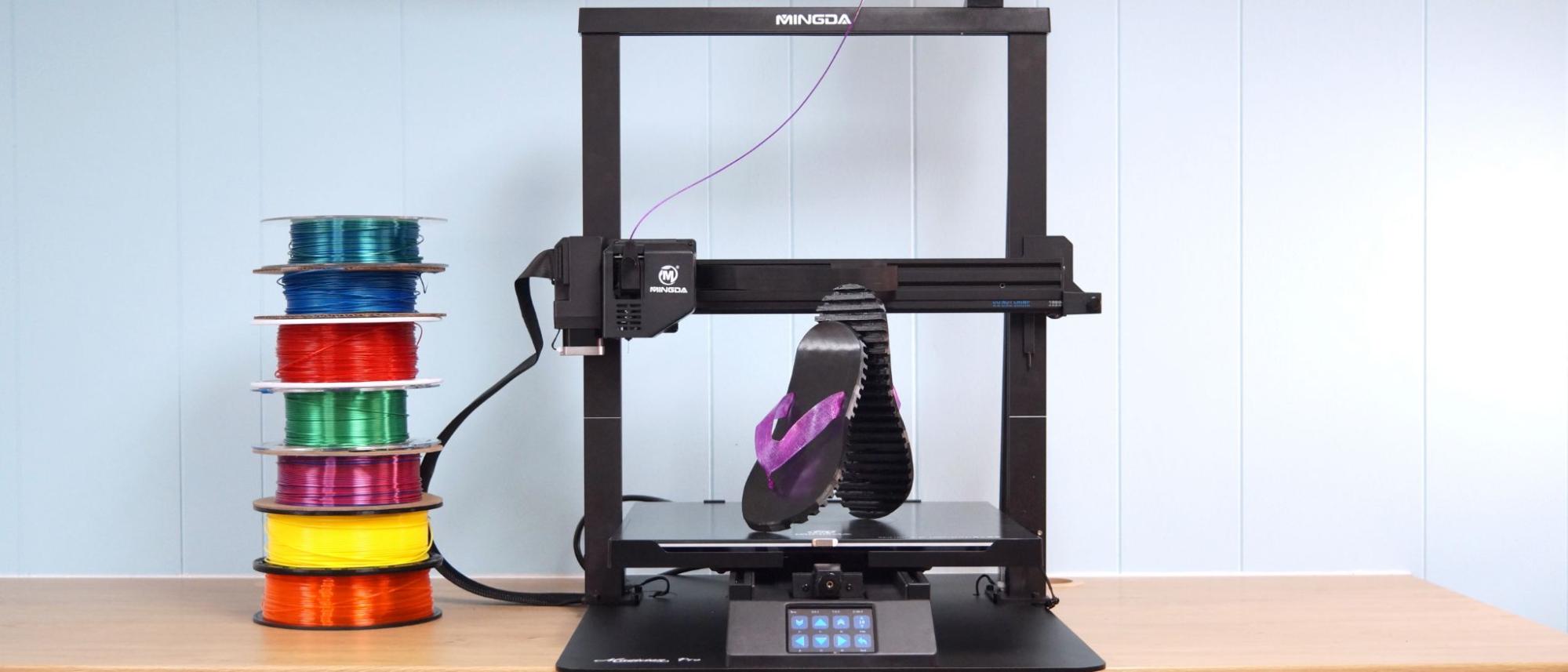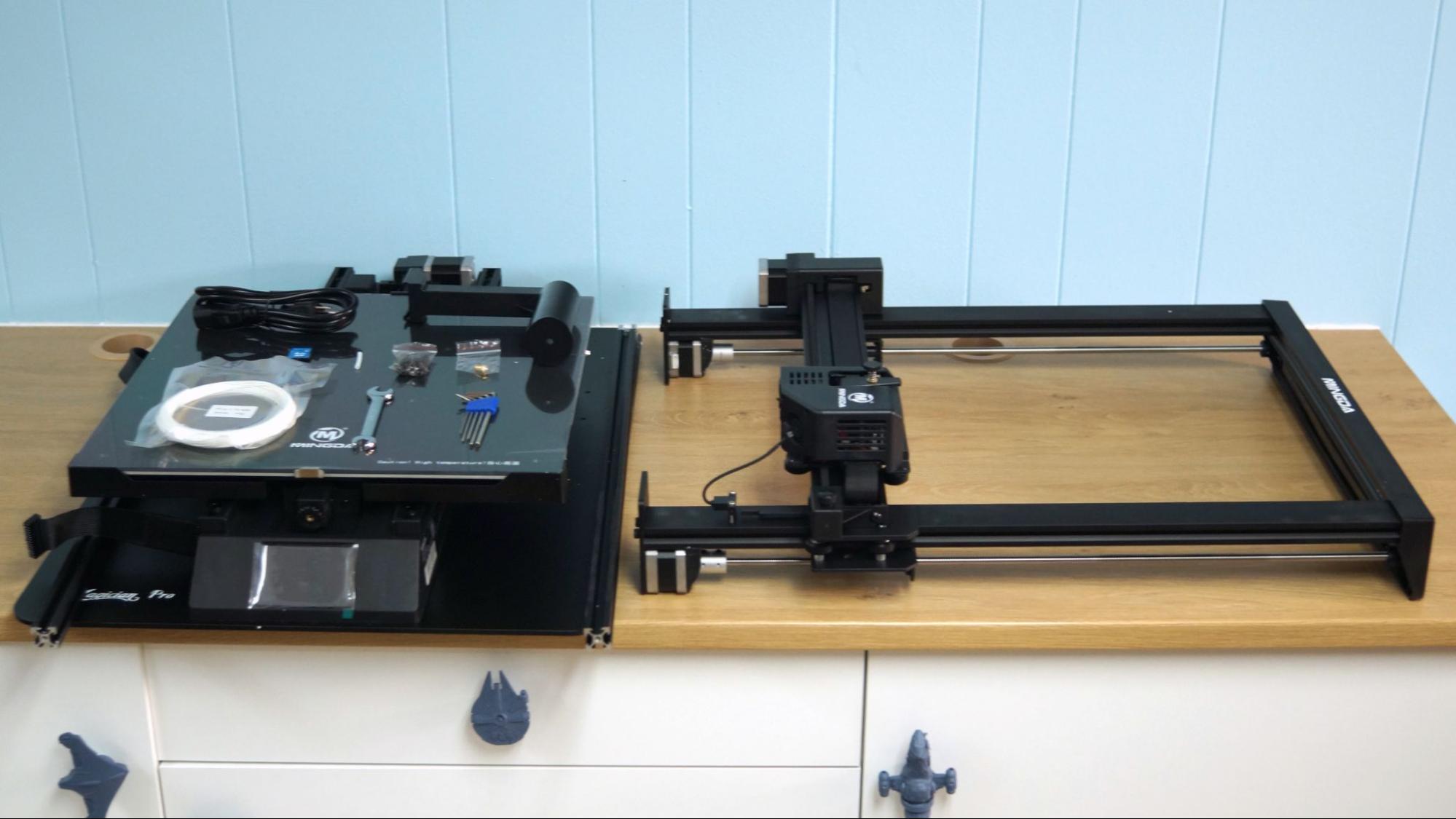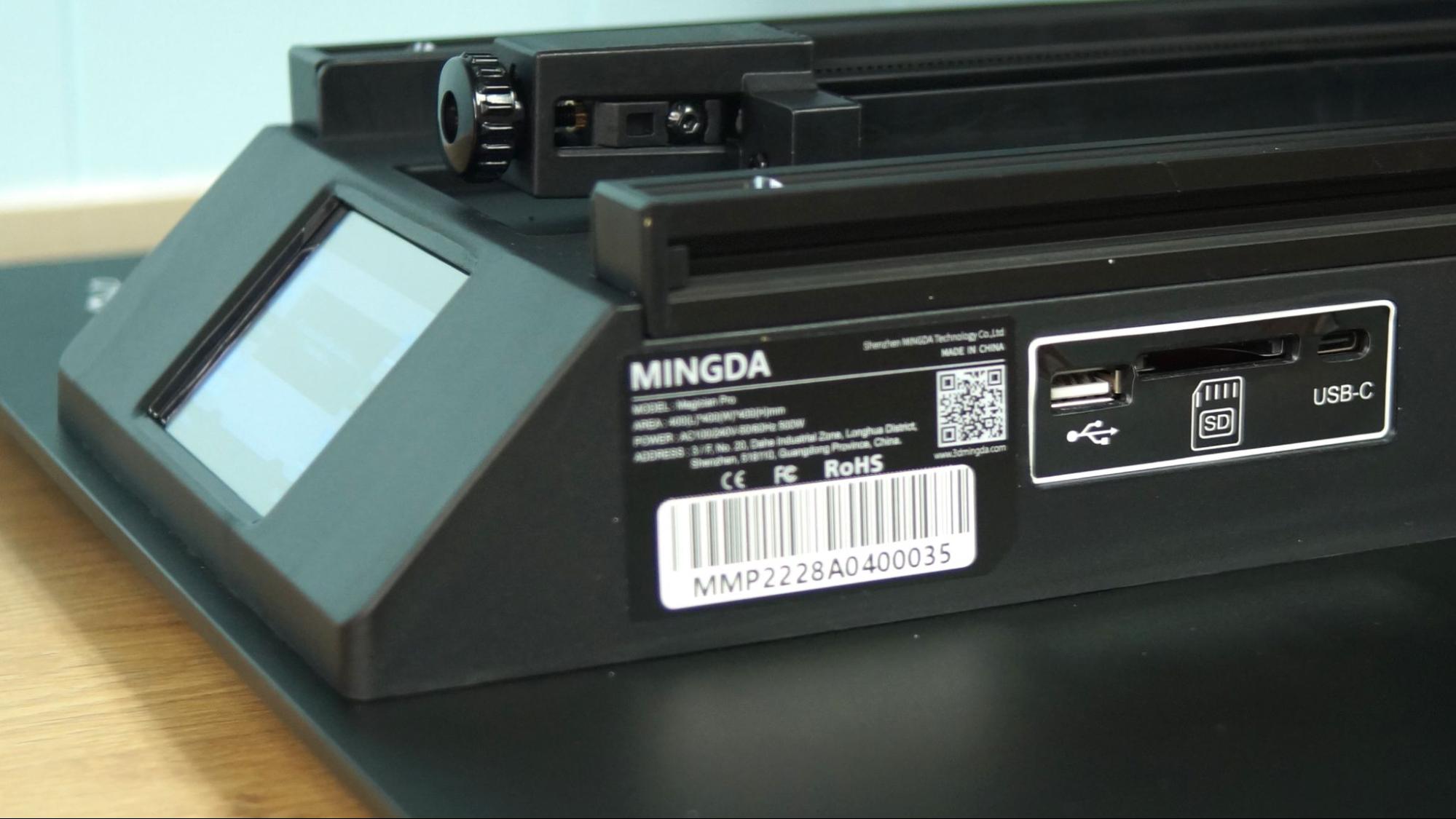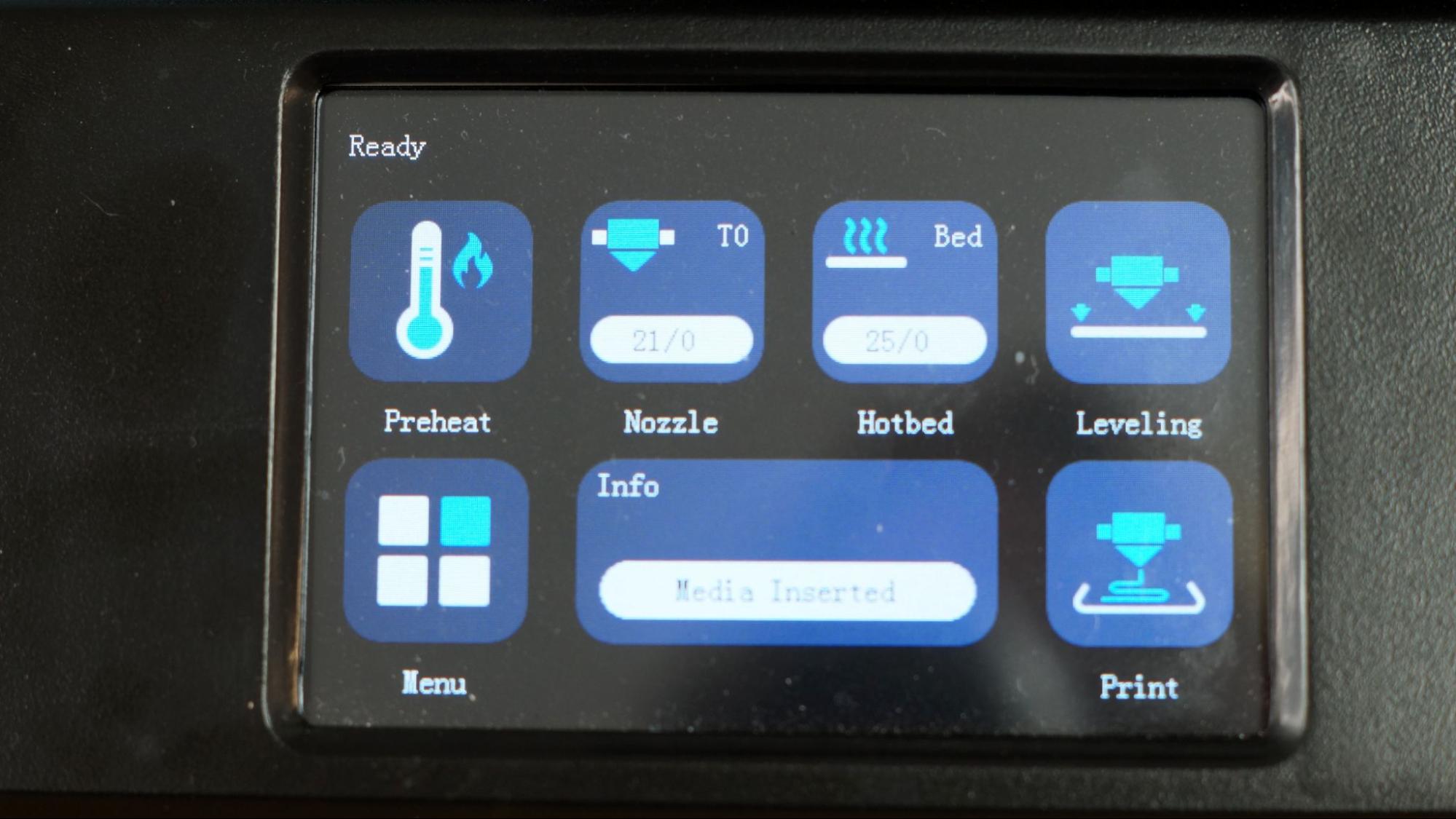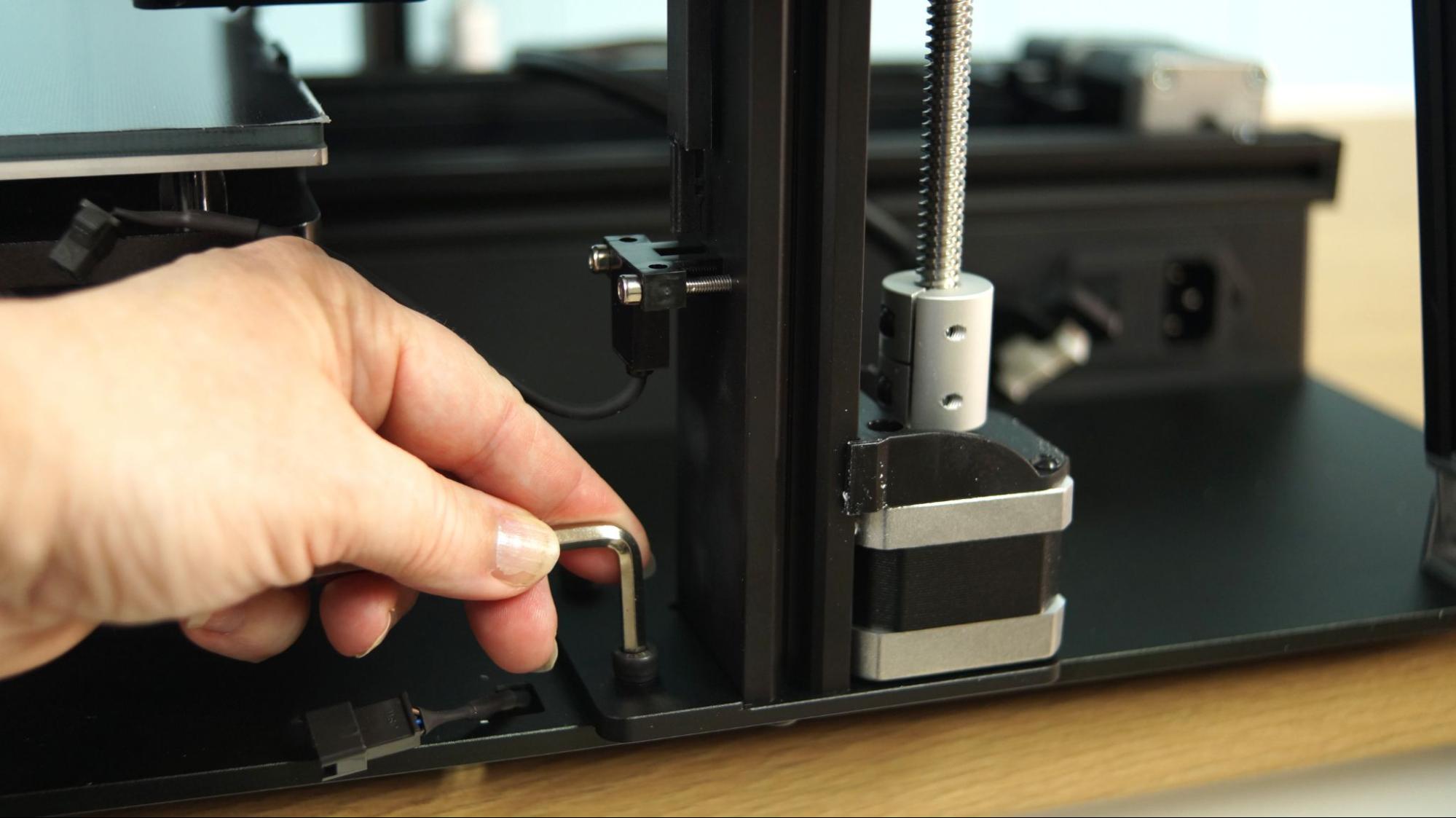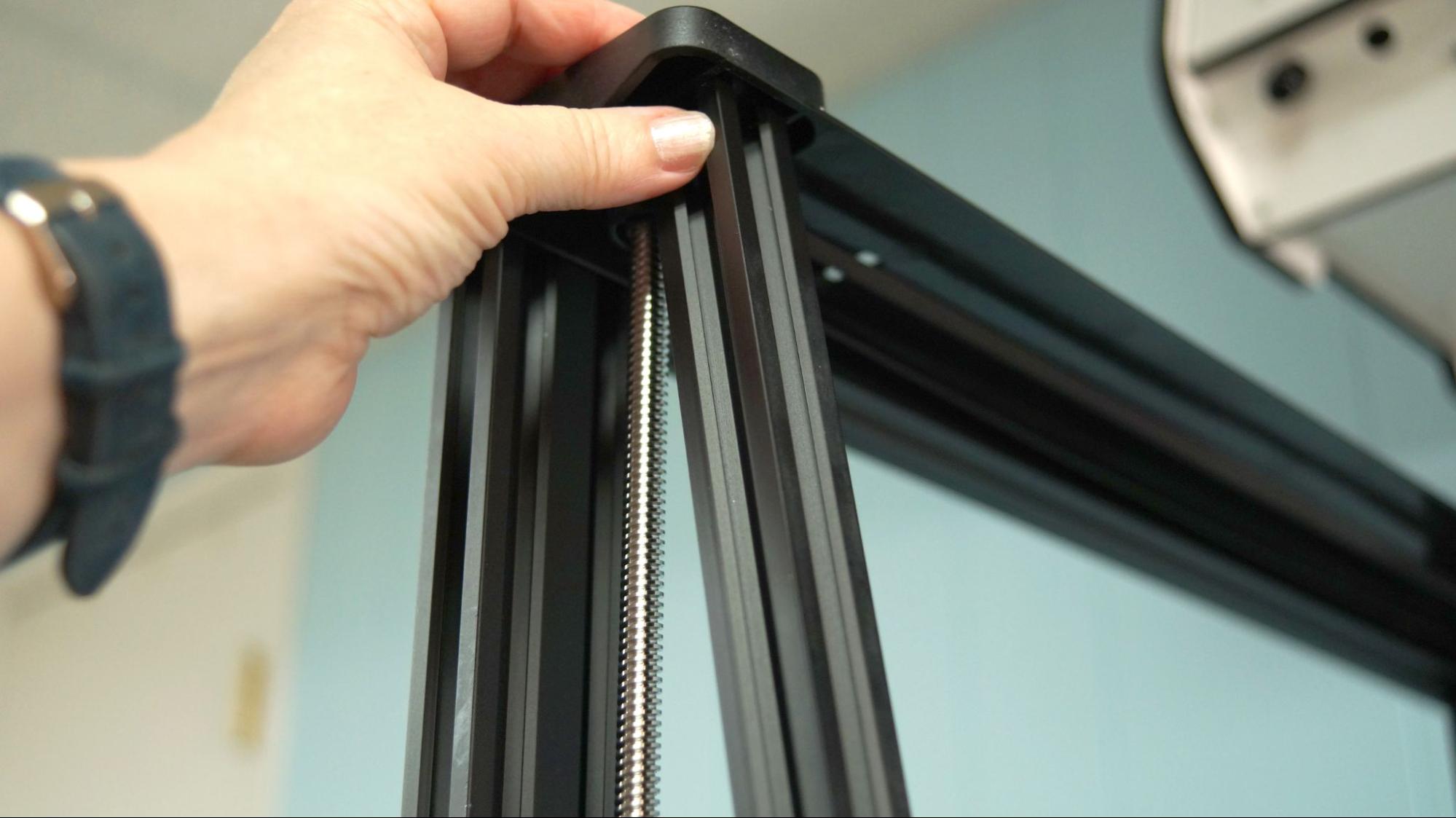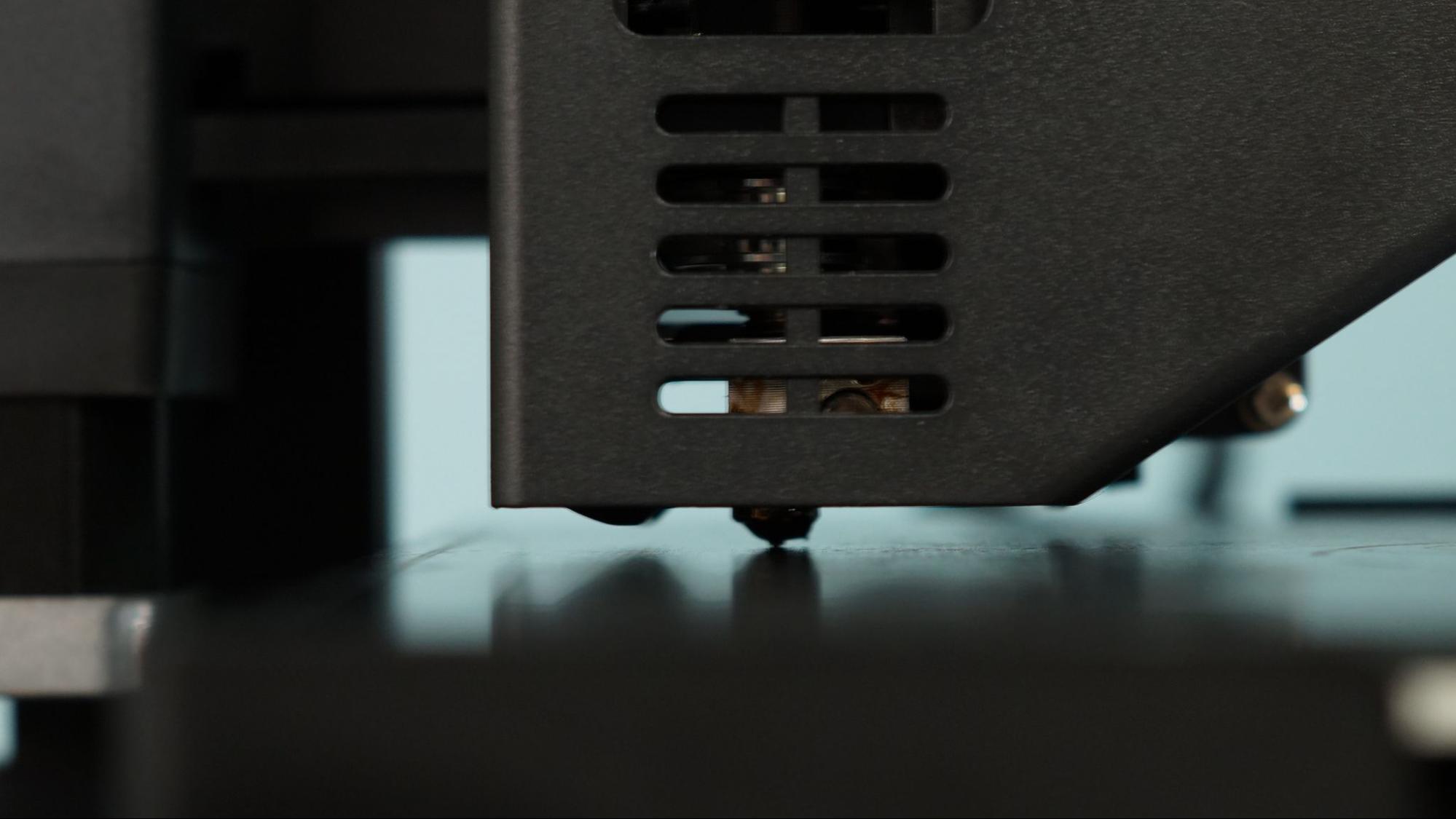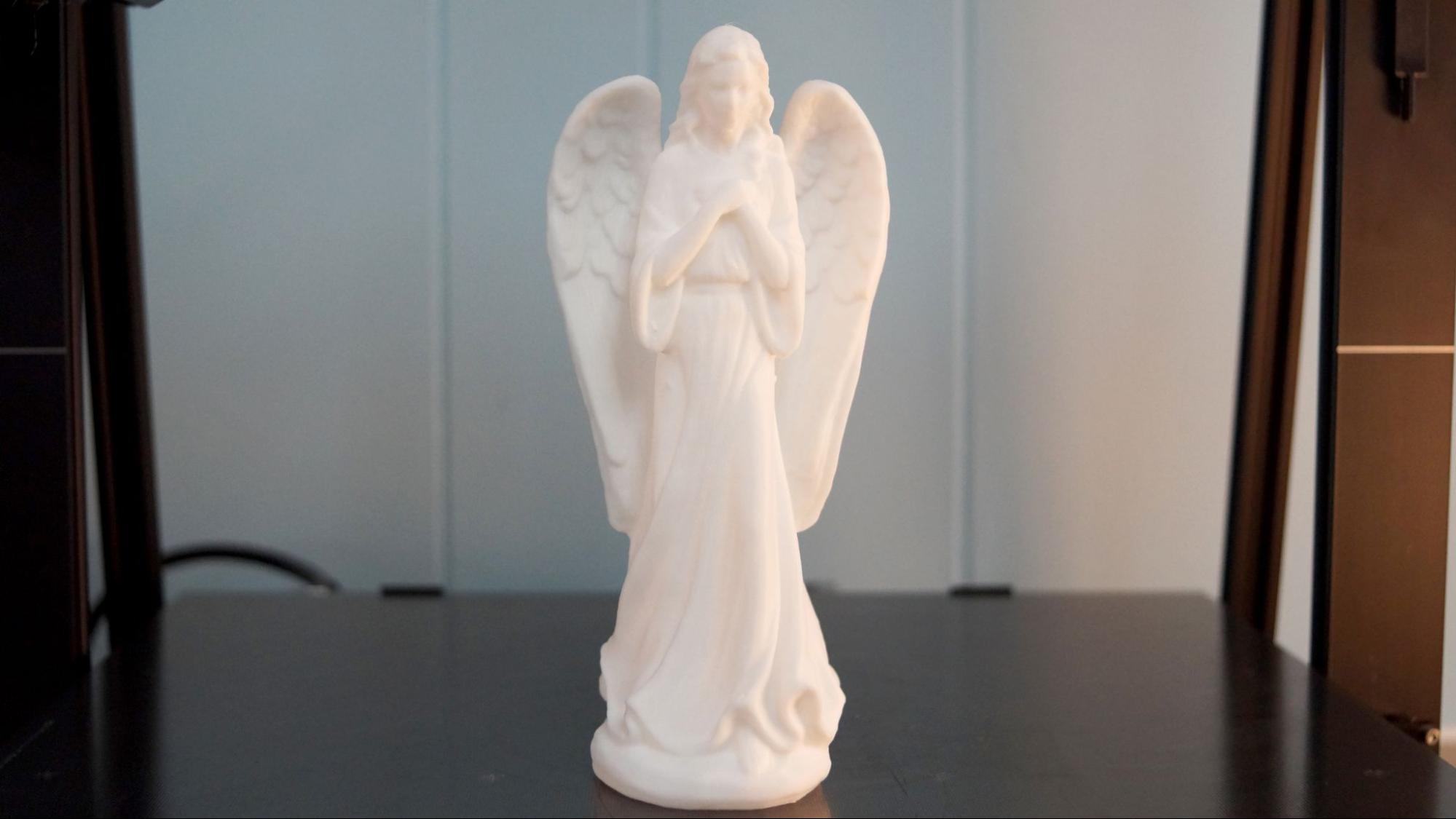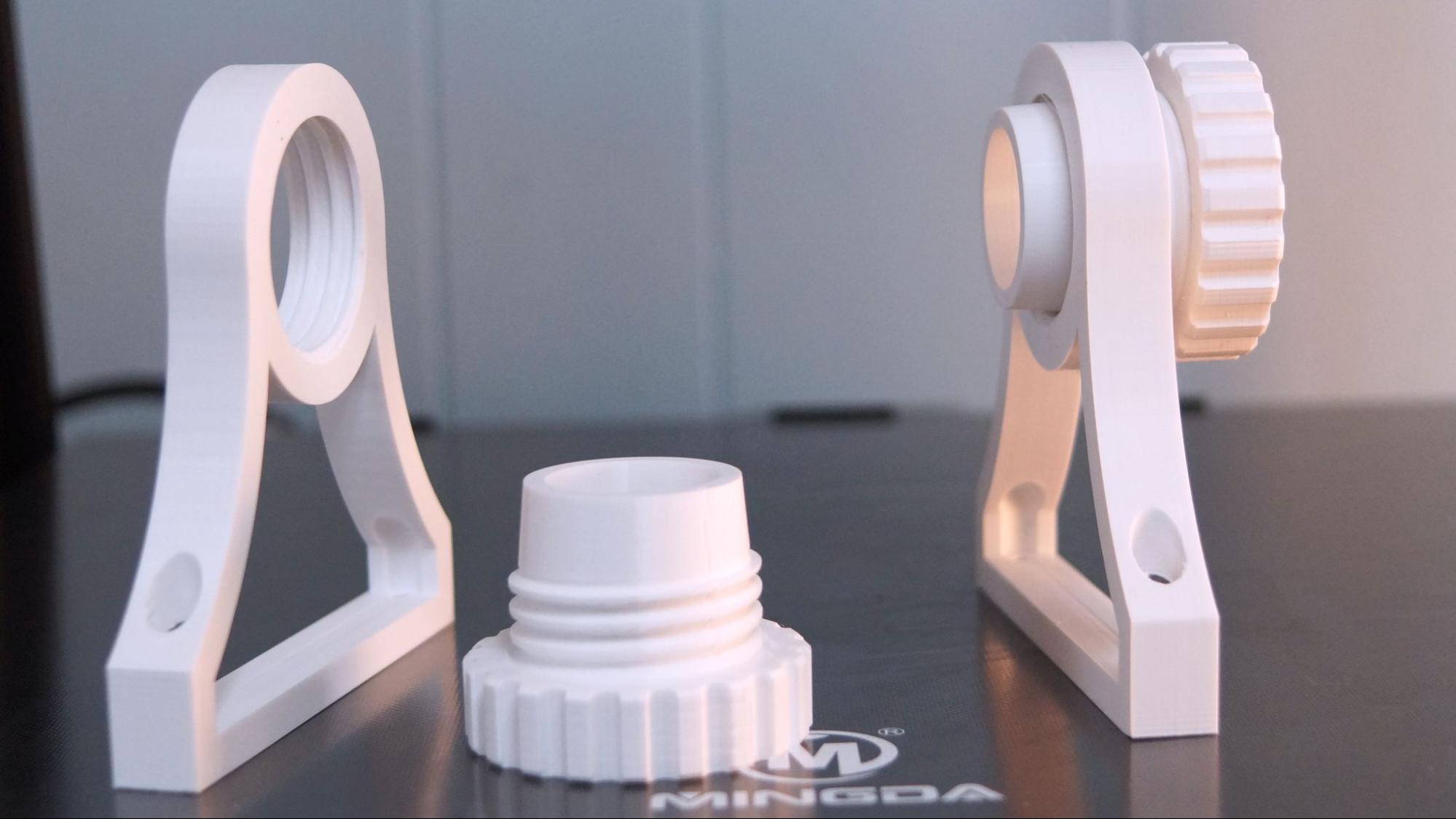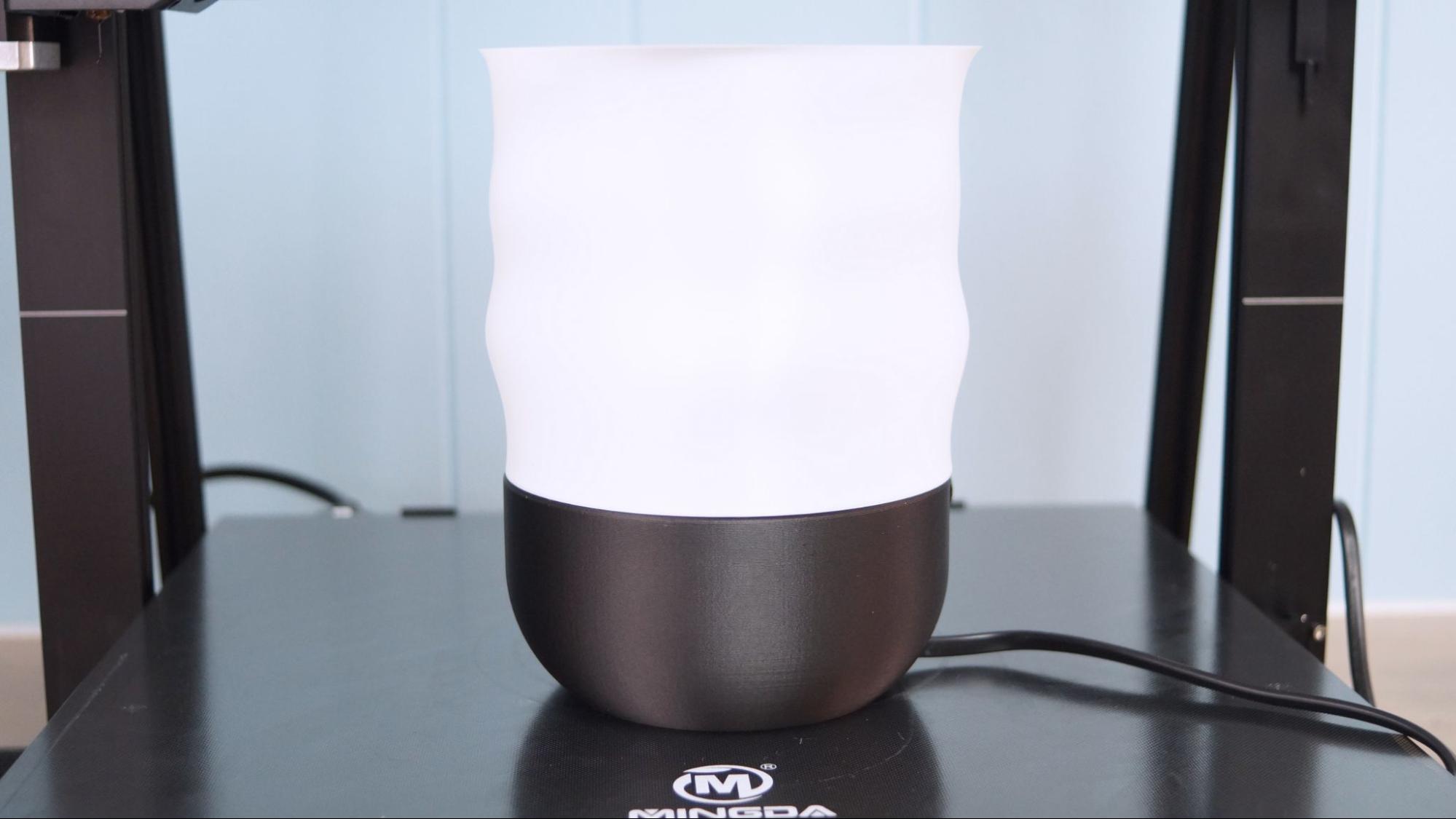Tom's Hardware Verdict
Mingda’s Magician Pro is easy to use with deluxe features and a massive build plate.
Pros
- +
Auto bed leveling
- +
Direct drive
- +
Full size SD card
- +
Easy assembly
- +
Quiet operation
Cons
- -
Too-sticky build surface
- -
Difficult to upgrade
Why you can trust Tom's Hardware
So you want to print big. But you want it easy too. You’re looking for a printer with a simple-to-load direct drive and an auto leveling system that works without hassle. Then let’s talk about the Mingda Magician Pro.
This printer is basically a beefed up Magician X, with twice the build volume. Speaking of size, you will need a sizable table to handle this beast of a machine, which requires an extra deep 30 inches for the Y axis. It also weighs a whopping 32 pounds, which doesn’t sound too bad for a toddler, but 32 pounds of printer without a handle or a good spot to grab is more than awkward. You don’t want to move this 3D printer once it’s assembled.
It is, quite literally, a very solid printer, with a belt-synced dual Z axis and stabilizing rods on the backside to offer support without getting in the way. The Y axis is also extra wide, lending even more stability. The glass plate, while a bit too sticky, is super flat – especially when combined with Mindga’s easy to use auto bed leveling system.
I had the Magician Pro out of the box, leveled and printing in about 30 minutes. That makes it easier to use than many of the best 3D printers.
Specifications: Mingda Magician Pro
| Machine Footprint | 650 x 586 x 675 mm (25.5 x 23.0 x 26.5 inches) |
| Build Volume | 400 x 400 x 400 mm (15.7 × 15.7 × 15.7 inches) |
| Machine Weight | 14.5 kg (32 lbs) |
| Material | PLA/PETG/TPU/ABS |
| Extruder Type | Direct Drive |
| Nozzle | .4mm (Interchangeable) |
| Build Platform | Coated Glass, heated |
| Filament Runout Sensor | Yes |
| Bed Leveling | Automatic touch sensor |
| Connectivity | SD card, USB stick, USB-C |
| Interface | Color LED touch screen |
Mingda Magician Pro: Included in the box
The Magician Pro comes with tools for assembling the printer and a few extras like a spare nozzle, an extra piece of Teflon tube, and a full sized SD card. A small sample of white PLA is included for your first test print.
The SD card has a PDF copy of the manual, a copy of Cura 4.13 and pre-sliced .gcode test files.
The printer does not come with a scraper to remove prints or snips to cut filament, but these are easily found at your local hardware store. This is my favorite scraper if you’re looking for something extra nice.
Get Tom's Hardware's best news and in-depth reviews, straight to your inbox.
Design of the Mingda Magician Pro
Mingda kept the overall look of the Magician Pro the same as the smaller Magician X. However, rather than scaling up the base proportionally to match the build plate, the Magician Pro perches on a giant slab of steel plate. The case for the power supply and motherboard is only as wide as needed – leaving no room for a tool drawer.
The Magician Pro has stabilizer bars attached from the back of the baseplate to the top of the gantry to hold it steady. It also has dual Z rods that are synced with a belt at the top. The Y axis is extra wide, giving it a steady foundation.
Cable management is quite tidy. The Magician Pro uses ribbon wires that are wrapped in black mesh from the base to the X gantry, then a fabric wrapped ribbon cable completes the journey to the toolhead.
I was really happy to find slots for both a full sized SD card and a USB stick – I wish more 3D printers would use this system.
Other small touches make the Magician Pro more user-friendly. It has belt tension knobs when you need to tweak the tightness, a frame that cradles the glass plate with just one clip and an easy-to-navigate graphic menu on the interface.
The auto leveling system physically taps the bed at 36 points, and I never needed to adjust the Z height for PLA. PETG requires a bit less squish, so I did use baby steps to compensate for materials as needed.
Like the Magician X, I had issues with the coated glass plate, which does its job way too well. Normally, the coating on glass releases when it cools down, but this stuff keeps a strong grip on your prints. I’ve had to remove each print with a hammer and chisel.
Assembling the Mingda Magician Pro
The Magician Pro follows the current trend of 90% pre-assembled printers. The gantry slides on a groove on the baseplate and is held in place with six bolts – three on each side. The stabilizer rods are pre-attached on one end with a swivel, so they only need to be swung up and screwed into place at the top.
Electrical connections are easy to sort out, with most plugs being an inch or two from their connection point.
Once everything is connected, it’s a good idea to check your bolts, wheels and belts for excessive wiggle. If you find any loose wheels, these can be easily tightened with the provided wrench on the eccentric nuts.
Normally, the final step when assembling any 3D printer is to flip the power supply switch. The Magician Pro has done away with this step and there’s no switch to flip – it's already set for US power.
Leveling the Mingda Magician Pro
The Magician Pro has an auto leveling system where the nozzle physically touches the glass plate. The printer automatically warms up before leveling, removing any worry that the plate could expand or warp going from cold to hot.
To level the printer, select Level from the main menu. After the printer warms up, it will tap 16 points around the bed. I didn’t need to adjust the Z height after leveling, but there is a command if you need to tweak the settings.
Loading Filament on the Mingda Magician Pro
Loading this direct drive is very straightforward. Select preheat, then tap the type of filament you’re using. The Magician Pro heats quickly, so you won’t be left waiting long. Insert the filament into the top loading hole on the drive. Next, tap the load button on the screen. Keep the speed set at normal and increase the amount advanced to 10mm.
There’s no reverse on the Magician Pro’s drive, so you can only go forward. When you want to change colors, simply snip off the filament and advance the drive 30mm. Place the next filament into the hole and continue forward until you see a different color coming out of the nozzle.
Preparing Files / Software for Mingda Magician Pro
The Magician Pro comes with a copy of Cura 4.13.1 and directions on how to set up a custom profile. The same directions apply to using PrusaSlicer if you like.
After I received the Magician Pro, Mingda announced that profiles for all three of their newest printers – the Magician, Magician Pro and Magician Max – have been submitted to Cura. They are available on Cura 5 and up.
Printing on the Mingda Magician Pro
I started off with the pre-sliced test print – a rather large angel– and the sample filament. Unfortunately, the sample coil twisted into a knot, which isn’t the printer’s fault, just an issue when using sample coils without spools. I switched to a roll of generic white PLA and reprinted the angel. She turned out great. The model has very soft features, which doesn’t allow the Magician Pro to show off its quality.
I printed a large, 150% flexi axolotl by MatMire Makes with Inland Twinkling Purple PLA using a .16mm layer height for an extra impressive print. It took 42 hours and 58 minutes. (The eyes are painted.)
I wanted to try out some practical printing to take advantage of the Magician Pro’s huge print volume. Here’s a paper towel holder by Silent Carrier that was printed at .2mm layer height with Inland white PLA+. The parts were printed flat without supports and came out super clean with no strings, taking 13 hours and 42 minutes.
To test out PETG on a practical print, I made this lamp by Agustin Arroyo, AKA Flowalistik. The top is more Inland white PLA+ in super fine .12mm vase mode. The base is Protopasta Carbon Fiber PETG, printed at a standard .2mm layer height. The whole thing took 18 hours and 54 minutes to print. It looks like something I picked up at IKEA.
Finally, I wanted to test out a big TPU print. The Magician Pro has an incredibly large build plate – surely big enough to print shoes? Yes it is. I found a pattern for flip flops on Thingiverse by SiPowers, modified them to my size and printed them in Inland Black TPU for the soles, and Matterhackers Build Series Translucent Purple for the straps. The straps could be a little more comfortable, but this is a truly practical print that worked out well. The soles printed tread up, resulting in a super smooth surface for your feet. The straps are only two layers thick but are quite sturdy. The whole pair took 23 hours and 41 minutes of print time, at a .2 layer height and slowed to 40mms.
Bottom Line
Retailing at $599, The Mingda Magician Pro is a huge 3D printer that’s fast to set up and simple to use for makers who want to get straight to the making. The easy loading direct drive and fuss free auto leveling system reduces a lot of hassle, especially when dealing with a printer of this size. You’ll want to carefully consider where you’re going to set it up. It needs at least 30 inches to accommodate the Y axis movement and weighs in at 32 pounds.
Mingda could work on this glass bed – it’s way too sticky and refuses to give up the goods even when ice cold. You’ll need to practice your hammer and chisel method to get prints off this build plate. However, the fact that the build plate is only held down with one clip makes it super easy to pry prints off without fear of joggling the printer too much.
The quality on the Magician Pro is excellent, making it a worthy machine for beginners or advanced makers who don’t want to waste time tinkering with their printer.
If you’re looking for a less expensive printer with the same build size and a less sticky build plate, check out the Anycubic Kobra Max. Priced at $549, it’s an Editor’s Choice and our pick for Best Printer for Props and Cosplay.

Denise Bertacchi is a Contributing Writer for Tom’s Hardware US, covering 3D printing. Denise has been crafting with PCs since she discovered Print Shop had clip art on her Apple IIe. She loves reviewing 3D printers because she can mix all her passions: printing, photography, and writing.
